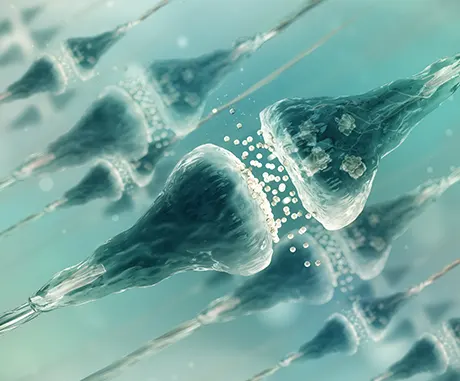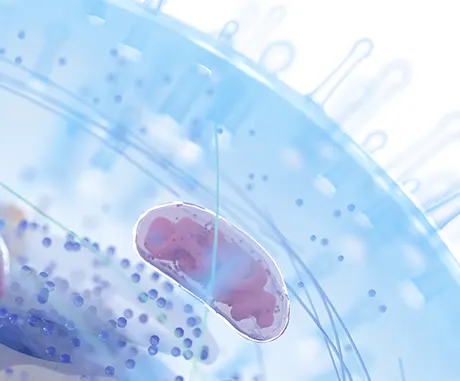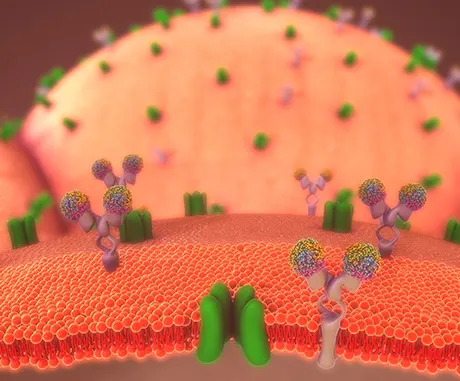
Signalling pathways
For a cell, intracellular signalling pathways are decisive as a reaction to the outside world, because a cell must be able to interact with its environment. To this end, cells must register and interpret messenger substances and use the available resources. For this purpose, cells use complex networks of proteins that are able to cope with these diverse tasks through complicated interactions.
The proteins involved in cell interactions are constantly changing. A cell defines its function on the basis of proteins, whereby even short-lived stimuli from the outside can be translated into long-term changes in the form and behaviour of a cell.
If the signal molecules are classified according to their function, they include hormones, growth factors, components of the extracellular matrix, cytokines, chemokines, neurotransmitters and neurotrophins. The number of signaling pathways is limited. However, since the cell can modulate these very specifically, it uses them for different tasks.
Signalling pathways in disease and injury

Signalling pathways are processes by which cells communicate with each other, react to external stimuli, convert them and transfer them into the cell. Distinguishing foreign or "hostile" cells from the body’s own ones is an important task of the immune system. In the event of injury or infection, information is passed on and processed within the body at the molecular level. At the site of damage, the cells communicate by means of defined messenger substances, the so-called cytokines.
Disturbed signalling pathways cause many diseases. In addition to cancer, it has now been shown that diabetes, kidney diseases, autoimmune diseases and heart diseases are also caused by errors in the signal transmission.
Cytokines regulate complicated defence reactions
Cytokines are messenger substances of the immune system that help immune cells in particular to communicate with each other. If something foreign enters the body, the first contact stimulates the production of cytokines. Other immune cells are thus informed about the imminent danger, attack cells are activated and directed to the right place. Cytokines act in a similar way when damage to body cells is discovered. Cytokines include, for example, interleukins.

Example of signal transmission
The epidermal growth factor (EGF) is the signal received by the cell’s EGF receptor, with the Ras protein acting as a mediator, stimulating epithelial and other tissues to proliferate, for example. The binding of EGF to the EGF receptor triggers two important signalling cascades:
An anti-apoptotic signal is generated in the cell, which prevents programmed cell death and thus stimulates the cell to survive.
The Ras protein promotes cell division. These signals are essential for healthy cells, but must always be precisely regulated in order to prevent excessive cell growth and thus tumour formation.
Signalling pathways between and within cells are the key to coordinated functions. The proteins involved are of fundamental importance for life. Their misregulation often causes diseases. In chronic inflammatory diseases, the amount of certain cytokines – interleukins – in the body is greatly increased.
The transmission of signals with messenger substances is a variant of cell communication. Signal transmission is the process by which a messenger triggers a reaction after the signal reaches its target cell. In most cases, the signals are transferred from outside the cell (extracellular) into the interior of the cell (intracellular). The trigger of the signal is called the stimulus and the messenger substance the ligand (e.g. hormones). The receiver of the signal is called the receptor. The connection of individual signal steps is defined as a signal cascade.

